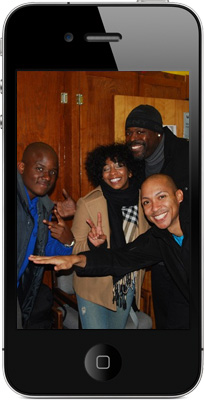New York City’s First Lady Chirlane McCray is leading an effort to address the pandemic-related, back to school concerns of students who are returning back to in-person learning.
Much of the focus of the back to school conversation has been on mask mandates and COVID-19 health protocols, but little attention has been paid to the elephant in the room that was once a main topic of discussion at the onset of the pandemic — mental health and wellness. McCray wants to make this a focal point of the back to school package in NYC.
This fall, every student in NYC’s public school system will get a mental health screening to establish an emotional and mental baseline. The first lady considers this a vital part of the reentry process for students who’s online learning experience may have been fraught with stress and triggers, like housing insecurity and domestic violence.

“Over the last year, so many of our young people have gone through so much. They’ve lost parents. They’ve been through financial instability in some homes. Some families have been evicted,” McCray told theGrio. “We want to make sure that this fall that we are screening young people to see what’s happened to them socially and emotionally, in addition to an academic screening.”
“As a result of the screening, we’re going to be able to deliver more personal attention depending on what level of support they need,” McCray added.
In partnership with the city’s health and hospitals institutions and social workers, McCray intends to tailor the mental support in schools to the size and need of each public school within the New York City public school system.
“Every school is going to have social workers or a school clinic or whatever the appropriate supports are for that school,” McCray emphasized. “We are making sure that every school has the professional mental support that is needed so that if a serious situation should arise, that there’s someone for the teachers, the school staff to turn to for additional help.”
New York City is funding this initiative, but if it were to be applied in other parts of the country, public health experts fear the funding from state and federal sources might not withstand the political pitfalls that have traditionally hit mental health resources. They are also concerned about the cashflow strain many states are facing due to the pandemic’s impact on state economies.

“That state funding is limited,” Dr. Irene Bean, an American Association of Nurse Practitioners fellow and family nurse practitioner, explained. “So they’re going to allocate money for things that may be more important than mental health.”
There are two main reasons Dr. Bean stresses that funding, resources and attention must be paid to students’ mental health as they return to classrooms — untreated mental illness and public safety.
Dr. Bean is concerned that while parents of youth with mental illness were out of work, their children lacked access to medications that would address anxiety, depression and ADHD. She’s also concerned an uptick in violence is on the way now that students are coming face to face again.
“When they were out of school, they didn’t see each other so they weren’t fighting and they weren’t bringing guns to school,” Bean explained. “In Tennessee, we had returned to school and they were only in school for less than a month and the violence and the guns that were on campus had started to escalate within that short amount of time.”

Education Secretary Miguel Cardona agrees with both McCray and Bean that mental health for students will be important and pose different challenges that must be addressed by educators. However, he is confident that funding and resources will be supported by the federal government.
“We know that if the emotional bandwidth of students is wide, their ability to learn is better. So we need to be prepared for that in the [American] Rescue Plan,” Cardona told theGrio. “Not only are there funds for social workers, psychologists and more mental health support staff, but there is also, in the [American] Families Plan, money to help develop teachers and provide that professional learning that they need to continue to evolve their skills to meet the changing demands of teaching.”
“If we’re not designed to holistically support our students and make sure that social and emotional well-being is a bigger part of our school, then we’re going to deal with the consequences of that later,” Cardona added.
Have you subscribed to theGrio’s new podcast “Dear Culture”? Download our newest episodes now!
TheGrio is now on Apple TV, Amazon Fire, and Roku. Download theGrio today!













More Stories
Mobilizing for 2026: Chavis Urges Black Press to Act – Lasentinel
Bakari Sellers Names the Most Effective Ways for Black Americans to Organize and Make a Change – The Root
How Trump's Plans For US Postal Service Could Impact Black Middle Class – NewsBreak